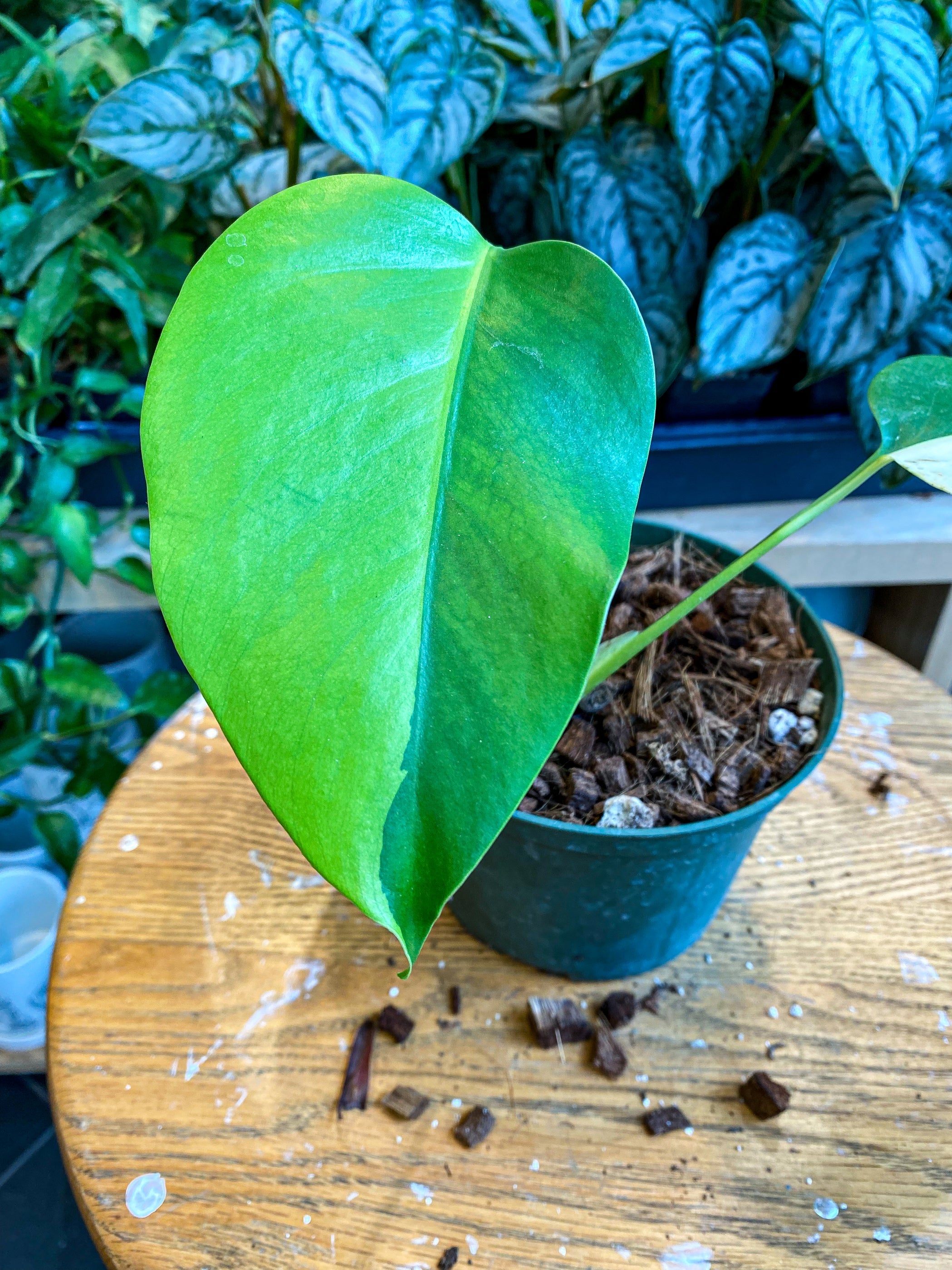
We all love a big fenestrated Monstera Deliciosa, even more so when it has variegation! But, what the heck is the difference between all the variegation types?! Keep reading and we'll embark on a journey to unravel the differences between popular variegated Monstera varieties, including Albo, Aurea, Sport, Mint, and Thai Constellation. Let's dive in and demystify the Monstera madness!

First Off, What Even is Variegation?
Variegation occurs due to genetic mutations or environmental factors affecting chlorophyll production and distribution within plant cells. Reduced chlorophyll levels or altered pigmentation create the distinct variegated patterns we see. Genetic mutations can be stable or unstable, resulting in variegated offspring or temporary variegation.
Variegation in plants can appear in various patterns, a few common in Monsteras are Marble, Half Moon, and Sectoral.
-
Marble Variegation
Marble variegation showcases irregular patches or streaks of different colors, such as white, cream, yellow, or pink. These patches may vary in size and distribution. Some say this type of variegation looks like a star filled sky or like a splatter painted piece of art, creating a unique look at each appearance.
-
Half Moon Variegation
Half moon variegation, displays crescent-shaped patterns along the edges of the leaves. These patterns can range in color from creamy white to pale yellow. The half moon variegation adds a touch of uniqueness to the overall appearance of the plant and is less frequent than marble variegation.
-
Sectoral Variegation
Sectoral variegation features larger sections of variegation. The sections are larger than the marbled variegation patches, but smaller than half moon variegation. Each leaf is unique from the last leaving plant lovers eager for the next leaf to unfurl.
Now, what are the different types of variegation in Monsteras?

The Albo:
Let's begin with the Albo Monstera, or Monstera Deliciosa 'Albo Variegata' which is one of today’s most popular variegated Monstera. It shows off its bright white variegation against deep green leaves, creating sharp and dramatic contrasts on its leaves. Albos grow with longer internodes, the space between two nodes, and they will need something to climb! Ensure your Albo gets proper lighting as this type of variegation in Monstera is more prone to reverting to full green as it matures. This is because the variegated portion of the leaf is not photosynthesizing, the green portion of the leaf needs to work overtime to make up for the lazy variegated side. When the plant is not getting enough chlorphyll, it will respond by throwing leaves with less variegation.

The Aurea:
Say hello to the Monstera Aurea, or Monstera Deliciosa 'Aurea.' The variegation occurs in a similar pattern to what you’d expect to find on a Monstera Albo, with blocks and splashes of variegation and some leaves that are half moons. The biggest difference visually however for the Aurea is the coloring of the variegation which is predominantly yellow. This yellow variegation is subtle but striking when paired with the rich green color of the leaf. Of all the variegation Monsteras, this Aurea is the most prone to reverting.

The Sport:
Ah, the Sport Monstera, an unexpected surprise that can often get people’s hopes up for their Monstera Deliciosa. Sports are genetic mutations that result in unique variegation patterns within a plant. These surprises can occur in various Monstera varieties, leading to new and exciting variations however this does not mean your plant is technically ‘variegated’ as this is an unstable mutation in the plant and can often be a one-off occurrence. Going to plant shops for 'Sport Hunting' has become a popular hobby as plant lovers to try and find sport variegated Monsteras at plant shops.
The Mint:
Enter the Mint Monstera! There are many different types of Mint Monsteras, each with different characteristics in their variegation. The plant pictured, is a Large Form Monstera Mint. The variegation on this plant usually occurs if the cells in the L2 layer fail to produce chlorophyll, causing them to become white on the affected area. The mint color actually comes from seeing the white layer through a thin green overlay. While the variegation is not necessarily stable, these rarely revert.
The Thai Constellation:
Let's not forget the Thai Constellation Monstera, or Monstera Deliciosa 'Thai Constellation’ which interesting enough is a human-made plant derived from tissue culture. Similar to the Monstera Albo, the coloring is often a white tone (though can lean more warm/creamy white). The easiest way to tell the difference between the two is through the consistency in the variegation in the leaves. Thai Constellations have a shorter space between the internodes, making them look more bushy than an Albo. With the Thai Constellation being human developed, the variegation is very stable and consistent with a more scattered effect.
That's it for this week. Until next Tuesday...... GET LOST!




